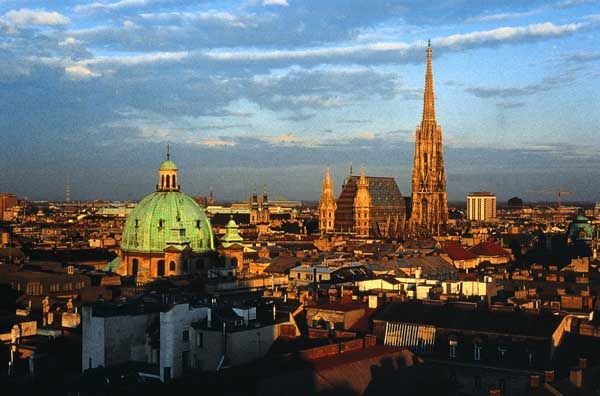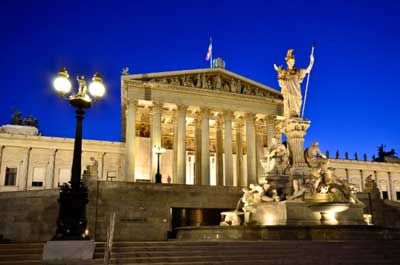Holiday Resolution
The urban and architectural qualities of the Historic Centre of Vienna bear outstanding witness to a continuing interchange of values throughout the 2nd millennium AD.
Three key periods of European cultural and political development - the Middle Ages, the Baroque period and the Gründerzeit - are exceptionally well illustrated by the urban and architectural heritage of Vienna.
The property consists of the medieval core (based on the Roman settlement), the principal Baroque ensembles with their axes, and the Gründerzeit constructions from the beginning of the modern period. The city of Vienna is situated on the Danube in the eastern part of Austria. The ancient Roman military camp, traces of which are still visible in the medieval urban fabric of present-day Vienna, was situated on a plain, west of an old branch of the Danube.
Beginning in the 12th century, the settlement expanded beyond the Roman defences, which were demolished. The medieval town walls surrounded a much larger area; they were rebuilt during the Ottoman conflicts in the 16th and 17th centuries and provided with bastions. This remained the core of Vienna until the walls were demolished in the second half of the 19th century. This inner city contains a number of medieval historic buildings, including the Schottenkloster, the oldest monastery in Austria, the churches of Maria am Gestade (one of the main Gothic structures), Michaelerkirche, Minoritenkirche and Minoritenkloster, from the 13th century. St Stephen's Cathedral dates from the 14th and 15th centuries. The period also saw the construction of civic ensembles, such as initial parts of the Hofburg. Whereas the monastic complexes were generally built from stone, becoming part of the defences of the medieval city, the residential quarters were of timber and suffered frequent fires.
Source: UNESCO




No comments:
Post a Comment